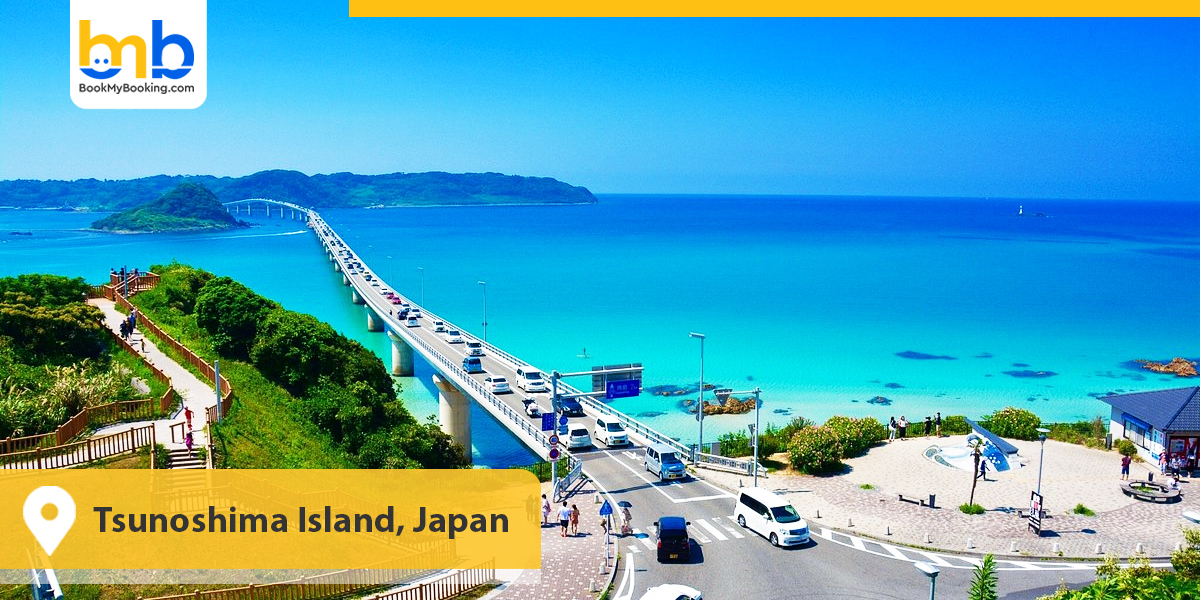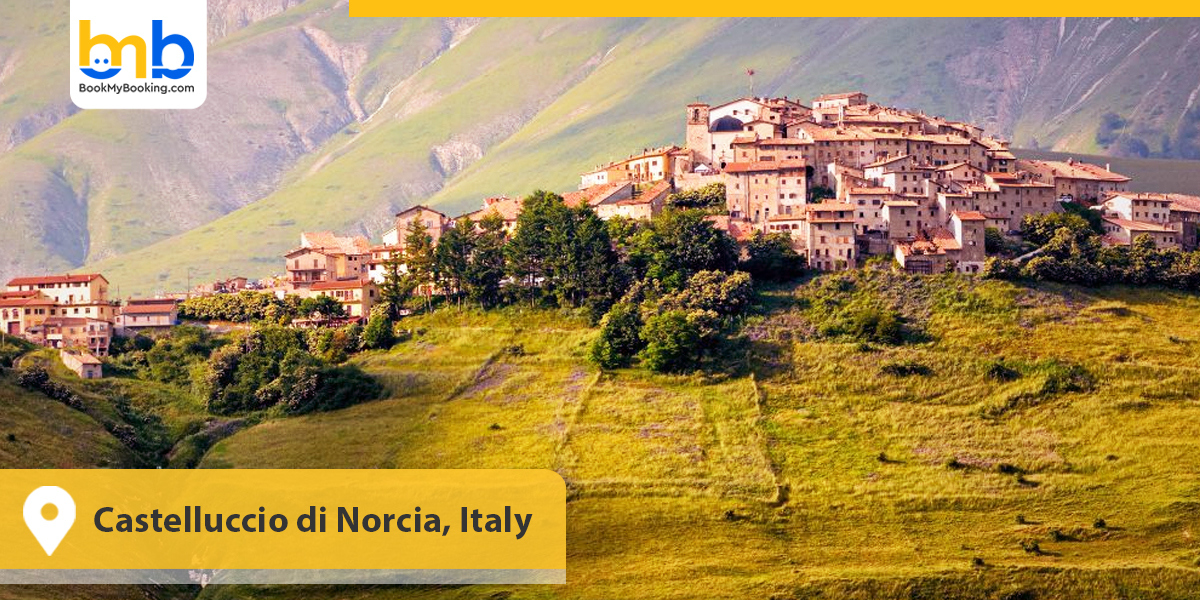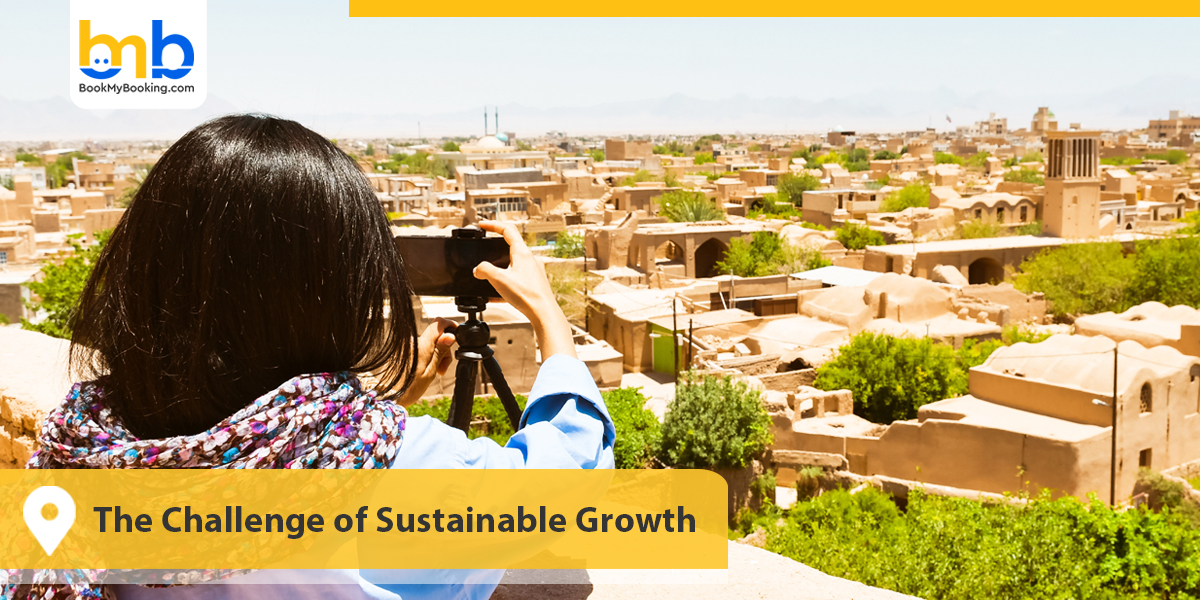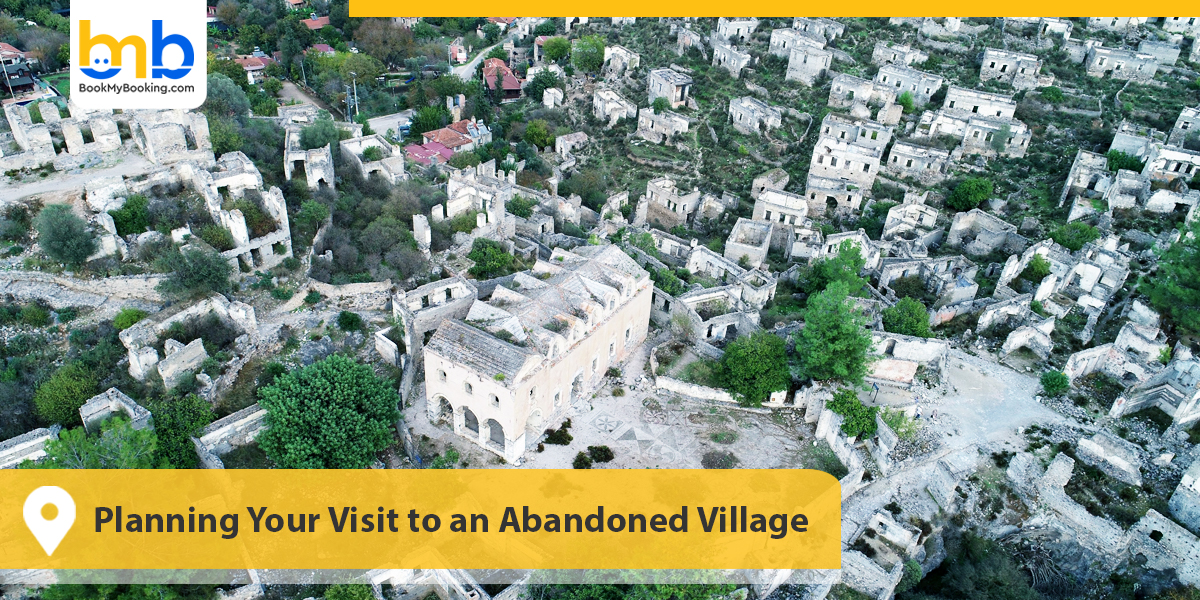In a world saturated with bucket list cities, luxury resorts, and endless airport queues, more and more travellers are turning their backs on the usual routes and asking a quieter question: What's out there that no one else is seeing? That's how the fascination with abandoned villages tourism began, not as a trend, but as a quiet rebellion against mass tourism.
The travellers are drawn to these forgotten village travel corners for their raw authenticity, such as the stone-paved alleys untouched by time, the faded murals still whispering history, and the peace that comes from hearing only your footsteps. In an age where everything is always "on," these ghost villages offer the rarest luxury of all: stillness.
Unsurprisingly, these places are now considered top offbeat travel destinations. With slow travel on the rise and people longing for meaningful experiences, these once-deserted hamlets are becoming havens for reflection, photography, and connection. Behind this quiet shift lies a powerful transformation, as more people choose to travel to abandoned villages, bringing with them not just curiosity but also the potential to revive entire communities.
Read More: BookMyBooking's Guide To The Happiest Cities In The World For 2025
Global Case Studies – 10 Forgotten Villages, Now Revived
All across the globe, abandoned or dying villages are experiencing something remarkable: travellers arriving not just as tourists, but as participants in their renewal. Once empty or nearly forgotten, these villages now echo with footsteps, laughter, and the scent of traditional cooking. Here are ten places where rural tourism revival transforms communities and reshapes the travel experience.
1. Pentedattilo, Italy

Once abandoned after a 1783 earthquake, this hauntingly beautiful cliffside village in Calabria sat empty for decades. However, recent cultural tourism revival has brought it back to life. Artists, musicians, and travellers visit during the annual film festival and creative residencies, filling its stone alleys with new energy. Handcrafted souvenirs, restored homes, and artistic installations are now familiar sights. Visitors seek more than scenery—they come for storytelling, silence, and soul. Pentedattilo has become a prime example of how travel to abandoned villages for tourism can revive art, culture, and community.
2. Kuldhara, India

Located near Jaisalmer in Rajasthan, Kuldhara is often referred to as a ghost village, having been deserted overnight by its Paliwal inhabitants over 200 years ago. For decades, it was shrouded in mystery. But today, it attracts responsible travellers, heritage lovers, and photographers. With government restoration efforts and local guides sharing the legends, heritage village tourism has brought back life, even temporarily. The site generates employment for local youth, who act as storytellers and caretakers. It reflects how the tourism of abandoned villages can respectfully blend myth and tourism, creating economic opportunities without disturbing the past.
Read More: 10 Small Scenic Villages With Epic Views And Exciting Activities
3. Houtouwan, China

A once-thriving fishing village on Shengshan Island, Houtouwan, was abandoned in the 1990s due to isolation. The project of reviving ghost town tourism began long a back. Nature has reclaimed it today—ivy drapes every home, and moss-covered steps wind through its hills. Drawing to its post-apocalyptic charm, travellers and photographers have put it back on the map. Known as one of Asia's most offbeat travel destinations, it thrives on controlled tourism. Former residents and their families now manage small tea houses and walking trails, proving how remote village tourism can coexist with preservation.
4. Al Jazeera Al Hamra, UAE

This ghost town near Ras Al Khaimah was abandoned in the 1960s, but its coral-stone architecture remains remarkably intact. Once empty, it serves as a cultural venue during the Ras Al Khaimah Fine Arts Festival, attracting artists, locals, and tourists. The restoration has sparked interest in eco-tourism in remote areas as it blends heritage with contemporary expression. The experience, including walking tours, cultural workshops, and nighttime photography, has turned it into a hub for responsible travel trends in the Gulf region.
5. Barichara, Colombia

Barichara never truly emptied, but it faded into obscurity until artists and eco-conscious travellers found it. With cobbled streets, whitewashed houses, and local artisan markets, it symbolised sustainable travel in 2025 in Latin America. Boutique homestays, slow food cafés, and clay workshops now thrive here, showing how rural travel experiences can support entire economies. The village's architecture and landscape also make it popular among hikers and filmmakers.
6. Ani, Turkey

Once a bustling Armenian city on the Silk Road, Ani was abandoned after centuries of conflict and earthquakes. Now part of a UNESCO World Heritage site, this "city of 1,001 churches" draws travellers seeking silence and sacred ruins. Though visitors cannot stay overnight, the nearby villages have benefited from guided tours and photography groups. This shift demonstrates that saving dying villages through tourism doesn't always mean complete repopulation; it can mean preserving stories and histories that would otherwise vanish.
7. Tsunoshima Island, Japan

The rural fishing communities here saw mass depopulation until recently, when their scenic bridges and abandoned buildings began drawing slow travellers, artists, and domestic tourists. Today, pop-up cafés, locally hosted tours, and guesthouses run by returning families make it a model for regenerative tourism. It's not a full revival but a delicate balancing act of memory, nature, and innovation.
8. Castelluccio di Norcia, Italy

After a devastating 2016 earthquake, this Umbrian village was nearly erased. But thanks to the help of returning families, NGOs, and community-based tourism, it's bouncing back. Every spring, fields surrounding the village bloom in reds, purples, and yellows, drawing photographers and hikers alike. Food tourism and artisanal product sales have helped fund rebuilding efforts, making it one of Europe's best examples of tourism saving dying villages.
9. Craco, Italy

Perched on a cliff in southern Italy, Craco was evacuated due to landslides. It remained a cinematic ghost town until film crews, tourists, and history buffs began arriving. Although no one currently resides there, locals from nearby villages earn an income through guided tours, historical reenactments, and film location services. Craco showcases how forgotten villages' travel can fuel rural economies in creative ways.
10. Gásadalur, Faroe Islands

Once isolated by cliffs, Gásadalur had only 16 residents until a tunnel connected it to the rest of the island in 2004. Since then, it has seen a slow trickle of hikers, photographers, and travellers seeking solitude. Now, a model for travel that gives back, locals run homestays and eco-tours, ensuring the village grows at its own pace. Surrounded by waterfalls and meadows, it exemplifies the low-impact, high-value tourism that defines sustainable travel 2025.
How Local Communities Are Benefiting

The revival of abandoned or declining villages has become a lifeline for once-forgotten communities. As travellers venture into quieter corners of the world, they're not just exploring but investing. From hosting visitors in homestays to selling handmade crafts and traditional meals, locals are becoming the heartbeat of these renewed destinations.
In many cases, entire micro-economies are forming. Villagers have converted their old homes into guesthouses, schools into art galleries, and courtyards into gathering spaces. The beauty of this movement lies in its sustainability. Instead of outsourcing labour or importing luxury, the focus is on community-based tourism. The locals are the storytellers, entrepreneurs, and protectors of their heritage.
This model supports everything from job creation to cultural preservation. Through rural travel experiences, travellers are helping reintroduce age-old traditions, regional cuisines, and lost dialects into public life. These are living, breathing identities being reawakened.
Importantly, this kind of tourism aligns with the ideals of regenerative tourism. It's not about overwhelming fragile places with foot traffic, but allowing them to grow at their own rhythm. When done right, it leads to dignity, not dependency and genuine partnership between guests and hosts.
In this quiet revolution, it's the villagers themselves who are becoming the curators of their future. Those who choose remote village tourism are helping rebuild livelihoods, restore pride, and rekindle hope.
The Rise of Remote Work and Digital Nomads in Villages

The post-pandemic world has significantly altered how people live and work, and small, previously overlooked communities are starting to benefit. Here's how digital nomads in remote villages are transforming abandoned and rural spaces worldwide.
Why Villages Are the New Remote Work Hotspots?
Tired of high rents, fast cities, and overcrowded digital nomad hubs, many remote workers are now turning to the countryside. In doing so, they're helping spark a quiet revolution. Abandoned stone homes, empty cafés, and silent markets are coming alive again. It's the perfect blend of the slow travel movement and modern flexibility, aligning with the spirit of sustainable travel in 2025.
What's the appeal?
- Affordable living and low-cost rentals
- Beautiful, natural surroundings far from tourist noise
- A chance to connect with authentic local culture
- Access to peaceful workspaces with better work–life balance
What Happens When Nomads Settle In?
When a digital nomad moves into a remote village, the ripple effects are real and positive. It's not just about opening a laptop in a scenic spot; it's about creating long-term value for communities. This is where rural tourism revival meets remote work, a potent, regenerative mix.
Here's what begins to happen:
- Old homes are restored and rented long-term
- Cafés and corner shops reopen, serving new customers
- Local guides and artists get new clients and collaborators
- Traditional skills and languages are preserved through day-to-day interactions
- Real Stories: Villages Making a Comeback
All across the globe, remote workers are settling in villages that were once on the verge of fading into history. This shift shows how digital nomads in remote villages are no longer rare; they're becoming vital to local economies.
- In Spain, rural towns like Rubiá now offer tax breaks and co-working spaces
- In Georgia, digital nomads are reviving sleepy mountain towns with craft shops and cultural events
- In Vietnam, lesser-known villages are becoming hubs for content creators and slow travellers
- A Win-Win Model for Travel and Community
Here's why this model works so well:
- It provides year-round income to villages, beyond tourist seasons
- It supports community-based tourism in a low-impact, high-value way
- It encourages responsible travel trends, with deeper engagement and fewer crowds
- It promotes skills exchange, tech access, and inclusive storytelling
The Challenge of Sustainable Growth

The revival of abandoned villages through tourism is a beautiful and hopeful story, but it's not without its pitfalls. As more travellers seek out these quiet, off-the-beaten-path destinations, the risk of overwhelming them grows. What starts as a slow trickle of curious visitors can quickly become a flood, and without careful management, this influx can threaten the charm and authenticity that made these places special.
One common challenge is over-tourism. Villages that once thrived in peaceful isolation can become crowded, noisy, and commercialised almost overnight. Instagram-famous ghost towns are swarmed by photo-hungry tourists who often disregard local customs and the environment. This surge can increase housing costs, pushing locals out and turning once-living communities into seasonal showpieces.
This scenario highlights the importance of locally led tourism. Successful revivals are those where communities take charge, forming tourism boards, setting visitor limits, and crafting experiences prioritising cultural integrity and long-term well-being over quick profits. When locals guide the process, tourism becomes a tool for travel that gives back, ensuring benefits reach those who call these villages home.
But sustainability alone is no longer enough. Many villages are embracing regenerative tourism, a forward-thinking approach that aims to leave destinations in a better state. This means actively encouraging visitors to participate in restoration efforts, funnelling tourism revenue into infrastructure improvements, and educating travellers on minimising their footprint. Through this model, reviving ghost towns' tourism becomes a genuine partnership between visitors and hosts.
Achieving this balance is delicate. The goal is to attract better tourists: those who stay longer, engage more deeply, support local artisans and farmers, and opt for homestays over chain hotels. These travellers spread their visits throughout the year, easing pressure on village resources and allowing cultural traditions to flourish without being commodified.
Ultimately, the future of tourism in abandoned villages depends on thoughtful stewardship. With careful stewardship, these places can remain vibrant, living examples of how tourism can uplift without overwhelming.
Planning Your Visit to an Abandoned Village (Tips & Ethics)

Visiting an abandoned or nearly forgotten village isn't like booking a beach resort or city tour. It calls for more thoughtfulness, respect, and preparation. As the popularity of abandoned villages tourism grows, travellers have a unique opportunity to be part of a positive change, but only if they travel responsibly.
Do Your Homework Before You Go
Research is your best friend when planning a trip to these hidden gems. Every village has its own history, culture, and current challenges. Understanding the local context helps avoid unintentional harm. Look for:
- The village's story and why it was abandoned
- Current population and community dynamics
- Local rules or customs that travellers should know
- Sustainable travel initiatives or community projects you can support
By learning before you leave, you join a global movement of responsible travel trends to protect fragile places.
Choose Authentic Stays and Local Experiences
Skip the international hotel chains. Instead, look for guesthouses, family-run homestays, or eco-lodges that are locally operated. This choice ensures your money stays in the community, fostering economic empowerment and cultural exchange.
Seek out activities that showcase real village life, like:
- Cooking traditional meals with locals
- Participating in craft workshops
- Attending cultural festivals or storytelling sessions
This approach aligns perfectly with community-based tourism, enabling you to experience rural life while supporting local communities.
Respect Pace, Privacy, and Property
One key to responsible village travel is understanding that these places often move to a different rhythm than bustling tourist spots. Respect the quiet, avoid loud behaviour, and be mindful when exploring abandoned buildings or private property. Always ask permission before taking photos of people or homes. Remember, your role is not just to visit but to observe and honour.
Support Local Economies Directly
Buy handmade crafts, fresh produce, and meals from local vendors whenever possible. Hiring local guides, even for simple walks, keeps money circulating within the village. This direct engagement is vital for the tourism-saving dying villages movement.
Conclusion
The rise of abandoned villages, tourism tells a hopeful story: travel that doesn't just take, but gives back. Whether through supporting local artisans, respecting fragile ecosystems, or simply slowing down to appreciate heritage, travellers today are redefining what it means to explore.
As travel to abandoned villages grows, it offers a powerful alternative to crowded hotspots and fast tourism. This movement champions community-based tourism, responsible travel trends, and tourism saving dying villages, proving that even the quietest places can have the loudest impact.
So next time you plan your journey, consider stepping into a forgotten village to see and to help write the next chapter in its story. After all, the most meaningful travel experiences leave a positive mark, long after the suitcase is unpacked.
 Indian Rupee
Indian Rupee Pound Sterling
Pound Sterling UAE Dirham
UAE Dirham US Dollar
US Dollar Afghanis
Afghanis Algerian Dinar
Algerian Dinar Angolan Kwanza
Angolan Kwanza Argentine Pesos
Argentine Pesos Armenian Dram
Armenian Dram Aruban Florin
Aruban Florin Australian Dollar
Australian Dollar Azerbaijani Manat
Azerbaijani Manat Bahamian Dollars
Bahamian Dollars Bahraini Dinar
Bahraini Dinar Baht
Baht Balboa
Balboa Bangladeshi Taka
Bangladeshi Taka Barbados Dollars
Barbados Dollars Belarusian Rubles
Belarusian Rubles Belize Dollars
Belize Dollars Bermuda Dollars
Bermuda Dollars Bhutanese Ngultrum
Bhutanese Ngultrum Bolivares Fuertes
Bolivares Fuertes Bolivianos
Bolivianos Brazilian Reais
Brazilian Reais Brunei Dollars
Brunei Dollars Bulgarian Leva
Bulgarian Leva Burundian Franc
Burundian Franc Cambodian Riels
Cambodian Riels Canadian Dollar
Canadian Dollar Cape Verdean Escudo
Cape Verdean Escudo Cayman Islands Dollars
Cayman Islands Dollars Central African CFA franc
Central African CFA franc CFP Franc
CFP Franc Chilean Pesos
Chilean Pesos Colombian Pesos
Colombian Pesos Colón
Colón Colones
Colones Comorian Franc
Comorian Franc Congolese Franc
Congolese Franc Convertible Marka
Convertible Marka Cordobas
Cordobas Cuban Pesos
Cuban Pesos Danish Krone
Danish Krone Denars
Denars Dinars
Dinars Djiboutian Franc
Djiboutian Franc Dominican Pesos
Dominican Pesos Dong
Dong East Caribbean Dollars
East Caribbean Dollars Egyptian Pounds
Egyptian Pounds Eritrean Nakfa
Eritrean Nakfa Ethiopian Birr
Ethiopian Birr Euro
Euro Falkland Islands Pounds
Falkland Islands Pounds Fijian Dollars
Fijian Dollars Forint
Forint Gambian Dalasi
Gambian Dalasi Georgian Lari
Georgian Lari Ghanaian Cedi
Ghanaian Cedi Gibraltar Pounds
Gibraltar Pounds Guarani
Guarani Guinean Franc
Guinean Franc Guyanese Dollars
Guyanese Dollars Haitian Gourde
Haitian Gourde Hong Kong Dollars
Hong Kong Dollars Hryvnia
Hryvnia Icelandic Krona
Icelandic Krona Indonesian Rupiahs
Indonesian Rupiahs Iranian Rials
Iranian Rials Iraqi Dinar
Iraqi Dinar Jamaican Dollars
Jamaican Dollars Jordanian Dinar
Jordanian Dinar Kenyan Shilling
Kenyan Shilling Kips
Kips Koruny
Koruny Krone
Krone Kuna
Kuna Kuwaiti Dinar
Kuwaiti Dinar Lati
Lati Lebanese Pounds
Lebanese Pounds Leke
Leke Lempiras
Lempiras Lesotho Loti
Lesotho Loti Liberian Dollars
Liberian Dollars Libyan Dinar
Libyan Dinar Lira
Lira Litai
Litai Macanese Pataca
Macanese Pataca Malagasy Ariary
Malagasy Ariary Malawian Kwacha
Malawian Kwacha Malaysian Ringgit
Malaysian Ringgit Maldivian Rufiyaa
Maldivian Rufiyaa Mauritanian Ouguiya
Mauritanian Ouguiya Mauritian Rupee
Mauritian Rupee Meticais
Meticais Mexican Pesos
Mexican Pesos Moldovan Leu
Moldovan Leu Moroccan Dirham
Moroccan Dirham Myanmar Kyat
Myanmar Kyat Nairas
Nairas Namibian Dollars
Namibian Dollars Nepali Rupee
Nepali Rupee Netherlands Antillean Guilder
Netherlands Antillean Guilder New Dollars
New Dollars New Lei
New Lei New Shekels
New Shekels New Zealand Dollars
New Zealand Dollars North Korean Won
North Korean Won Nuevos Soles
Nuevos Soles Omani Rial
Omani Rial Pakistani Rupees
Pakistani Rupees Papua New Guinean Kina
Papua New Guinean Kina Philippine peso
Philippine peso Pula
Pula Qatari Rials
Qatari Rials Quetzales
Quetzales Rand
Rand Russian Rubles
Russian Rubles Rwandan Franc
Rwandan Franc Samoan Tala
Samoan Tala Sao Tomean Dobras
Sao Tomean Dobras Saudi Riyals
Saudi Riyals Seychellois Rupees
Seychellois Rupees Shillings
Shillings Sierra Leonean Leone
Sierra Leonean Leone Singapore Dollars
Singapore Dollars Solomon Islands Dollars
Solomon Islands Dollars Soms
Soms South Korean Won
South Korean Won Sri Lankan Rupees
Sri Lankan Rupees St. Helena Pounds
St. Helena Pounds Sudanese pound
Sudanese pound Sums
Sums Suriname Dollars
Suriname Dollars Swazi Lilangeni
Swazi Lilangeni Swedish Krona
Swedish Krona Switzerland Francs
Switzerland Francs Syrian Pounds
Syrian Pounds Tajikistani Somoni
Tajikistani Somoni Tanzanian Shilling
Tanzanian Shilling Tenge
Tenge Tongan Paanga
Tongan Paanga Trinidad & Tobago Dollars
Trinidad & Tobago Dollars Tugriks
Tugriks Tunisian Dinar
Tunisian Dinar Turkmenistani Manat
Turkmenistani Manat Ugandan Shilling
Ugandan Shilling Uruguayo Pesos
Uruguayo Pesos Vanuatu Vatu
Vanuatu Vatu West African CFA franc
West African CFA franc Yemeni Rials
Yemeni Rials Yen
Yen Zambian Kwacha
Zambian Kwacha Zlotych
Zlotych

